
The Baltimore and Ohio Railroad was the first common carrier railroad and the oldest railroad in the United States, with its first section opening in 1830. Merchants from Baltimore, which had benefited to some extent from the construction of the National Road early in the century, wanted to do business with settlers crossing the Appalachian Mountains. The railroad faced competition from several existing and proposed enterprises, including the Albany-Schenectady Turnpike, built in 1797, the Erie Canal, which opened in 1825, and the Chesapeake and Ohio Canal. At first, the B&O was located entirely in the state of Maryland; its original line extending from the port of Baltimore west to Sandy Hook, Maryland, opened in 1834. There it connected with Harper's Ferry, first by boat, then by the Wager Bridge, across the Potomac River into Virginia, and also with the navigable Shenandoah River.

MARC is a commuter rail system in the Baltimore–Washington metropolitan area. MARC is administered by the Maryland Transit Administration (MTA) and operated under contract by Alstom and Amtrak on track owned by CSX Transportation (CSXT) and Amtrak. In 2021, the system had a ridership of 1,291,900, or about 8,900 per weekday as of the second quarter of 2022, much less then the pre-pandemic daily ridership of 40,000 per weekday.
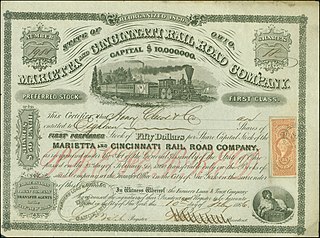
The Marietta and Cincinnati (M&C) was one of five important east-west railroads of southern Ohio; it was later absorbed by the Baltimore and Ohio Railroad (B&O). Its original route ran from Marietta through Vincent, Athens, Hamden, Chillicothe, Greenfield, Blanchester, and Loveland. It had two main branches: Blanchester to Hillsboro, which was originally part of the Hillsboro and Cincinnati Railroad; and Hamden to Portsmouth, Ohio, originally part of the Scioto and Hocking Valley Railroad.

The Cardinal is a long distance passenger train operated by Amtrak between New York Penn Station and Chicago Union Station via Philadelphia, Washington, D.C., Charlottesville, Charleston, Huntington, Cincinnati, and Indianapolis. Along with the Capitol Limited and Lake Shore Limited, it is one of three trains linking the Northeast and Chicago. Its 1,146-mile (1,844 km) trip between New York and Chicago takes 281⁄4 hours.

Mid-Ohio Valley Regional Airport is seven miles northeast of Parkersburg, in Wood County, West Virginia. It is owned by the Wood County Airport Authority and is also known as Wood County Airport or Gill Robb Wilson Field. It serves the Mid-Ohio Valley area which includes the Ohio cities of Marietta and Belpre and the West Virginia cities of Williamstown, Parkersburg and Vienna. It has scheduled passenger service subsidized by the Essential Air Service program.
The Northeast and the Great Lakes states are connected by an east-west railroad corridor. The endpoints of this corridor are New York City and Chicago. Along the way, the corridor passed through cities such as Philadelphia, Baltimore, Washington, D.C., Pittsburgh, Buffalo and Cleveland. There were branches off the corridor to cities such as Cincinnati, Detroit, Indianapolis, and St. Louis. For over a century, this corridor was dominated by four major railroads, and an aggregate of other railroads that served as a fifth option.

The Cincinnatian was a named passenger train operated by the Baltimore and Ohio Railroad (B&O). The B&O inaugurated service on January 19, 1947, with service between Baltimore, Maryland and Cincinnati, Ohio, carrying the number 75 westbound and 76 eastbound, essentially a truncated route of the National Limited which operated between Jersey City, New Jersey and St. Louis.

The North Bend Rail Trail is a 72-mile (116 km) rail trail in north-central and western West Virginia in the United States. It is operated by West Virginia State Parks and is part of the American Discovery Trail.

The National Limited was the premier train of the Baltimore and Ohio Railroad (B&O) on its route between Jersey City, New Jersey and St. Louis, Missouri, with major station stops in Washington, D.C., and Cincinnati, Ohio. It operated from 1925 to 1971. For much of its life it offered exclusive all-Pullman service, and it was the first long-distance train to be entirely air-conditioned. The National Limited was one of many trains discontinued when Amtrak began operations on May 1, 1971. Amtrak revived the name for another New York–St. Louis service which did not use the B&O route.

The Metropolitan Special was the workhorse passenger train of the Baltimore and Ohio Railroad (B&O) during the 1920s–1960s between St. Louis, Missouri, and New York's Rockfeller Center station.
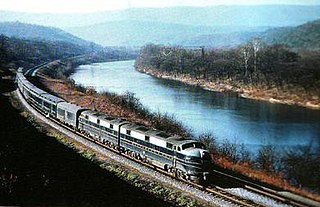
The Shenandoah was an American named passenger train of the Baltimore and Ohio Railroad (B&O), one of four daily B&O trains operating between Jersey City, New Jersey and Grand Central Station in Chicago, Illinois, via Washington, D.C. and Pittsburgh, Pennsylvania from the 1930s to the 1950s. Other B&O trains of that period on the route were the Capitol Limited, Columbian, and the Washington–Chicago Express. An alternate branch originated in Detroit and met with the Chicago part of the train at Deshler, Ohio, south of Toledo.
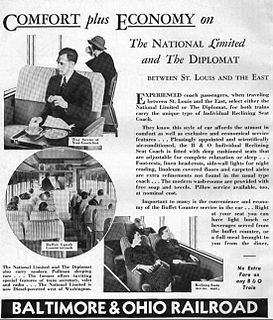
The Diplomat was a named passenger train of the Baltimore and Ohio Railroad (B&O) during the 1930s–1950s connecting New York City and St. Louis, Missouri, via Washington, D.C. Other B&O trains on the route during that period were the premier National Limited and the workhorse Metropolitan Special. The train was inaugurated in August 1930 after several changes to trains along the St. Louis Route. After World War II, the Diplomat operated as Train No. 3 westbound, and No. 4 eastbound. It was timed to provide connections to several western railroads that terminated in St. Louis, including the Frisco, the Santa Fe, Cotton Belt and Missouri Pacific, among others.
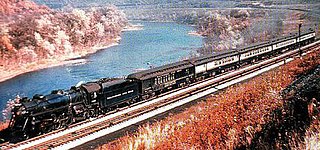
The Washingtonian was one of two daily American named passenger trains operated by the Baltimore and Ohio Railroad (B&O) during the 1940s–1950s between Baltimore, Maryland and Cleveland, Ohio, via Washington, D. C. and Pittsburgh, Pennsylvania. It was the last B&O long-haul passenger train to be powered by a steam locomotive from the venerable railroad's namesake city.

The Chicago Night Express was an American named train of the Baltimore and Ohio Railroad (B&O) on its route between Wheeling, West Virginia and Chicago, Illinois with major station stops in Newark, Ohio, Mansfield, Ohio and Willard, Ohio. The B&O inaugurated the Chicago Night Express in 1912. It was discontinued in 1956 due to declining passenger demand.

The West Virginian, later known as the Potomac Turbo and Potomac Special, was a daily passenger train operated by Amtrak between Washington, D.C. and Parkersburg, West Virginia. This route was previously served by the Baltimore & Ohio's (B&O) train of the same name, and was the first of several services in the state of West Virginia established at the behest of US Representative Harley Orrin Staggers, the powerful chair of the House Interstate and Foreign Commerce Committee. This patronage earned the train the derisive sobriquets "Harley's Hornet" and the "Staggers Special".

The James Whitcomb Riley was a passenger train that operated between Chicago, Illinois, and Cincinnati, Ohio, via Indianapolis, Indiana. Originally operated by the New York Central Railroad, it was taken over by Amtrak in 1971. Under Amtrak, it merged with the Chesapeake & Ohio Railway's George Washington to become a Chicago-Washington/Newport News train. In 1977, it was renamed the Cardinal, which remains in operation.
The Fast Flying Virginian (FFV) was a named passenger train of the Chesapeake & Ohio Railway.
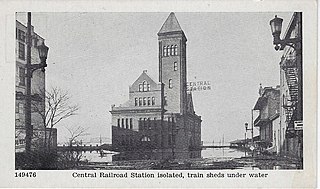
Central Station was a major station in Louisville, Kentucky. Built in the Richardsonian Romanesque style, it served several railroad companies until the mid-20th century. It was situated at North 7th Street and West River Road, near the Ohio River waterfront, and it was also known as the 7th Street Depot.

Akron Union Station was a series of three union stations serving several passenger railroads in Akron, Ohio from 1852 to 1971. The station's tenants included the Baltimore & Ohio Railroad, Pennsylvania Railroad and Erie Railroad. It was a hub, serving train companies serving destinations in different directions, west, north, south and east.
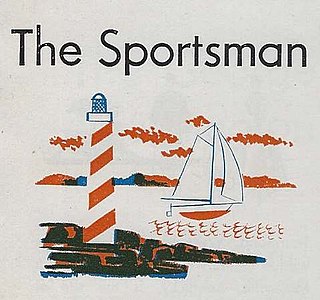
The Sportsman was a named passenger night train of the Chesapeake and Ohio Railway. It was the Chesapeake & Ohio's long-standing train bound for Detroit from Washington, D.C. and Phoebus, Virginia on the Chesapeake Bay, opposite Norfolk, Virginia. It was unique among C&O trains for its route north from the C&O mainline in southern Ohio. For most of its years it had a secondary western terminus in Louisville at its Central Station.



















